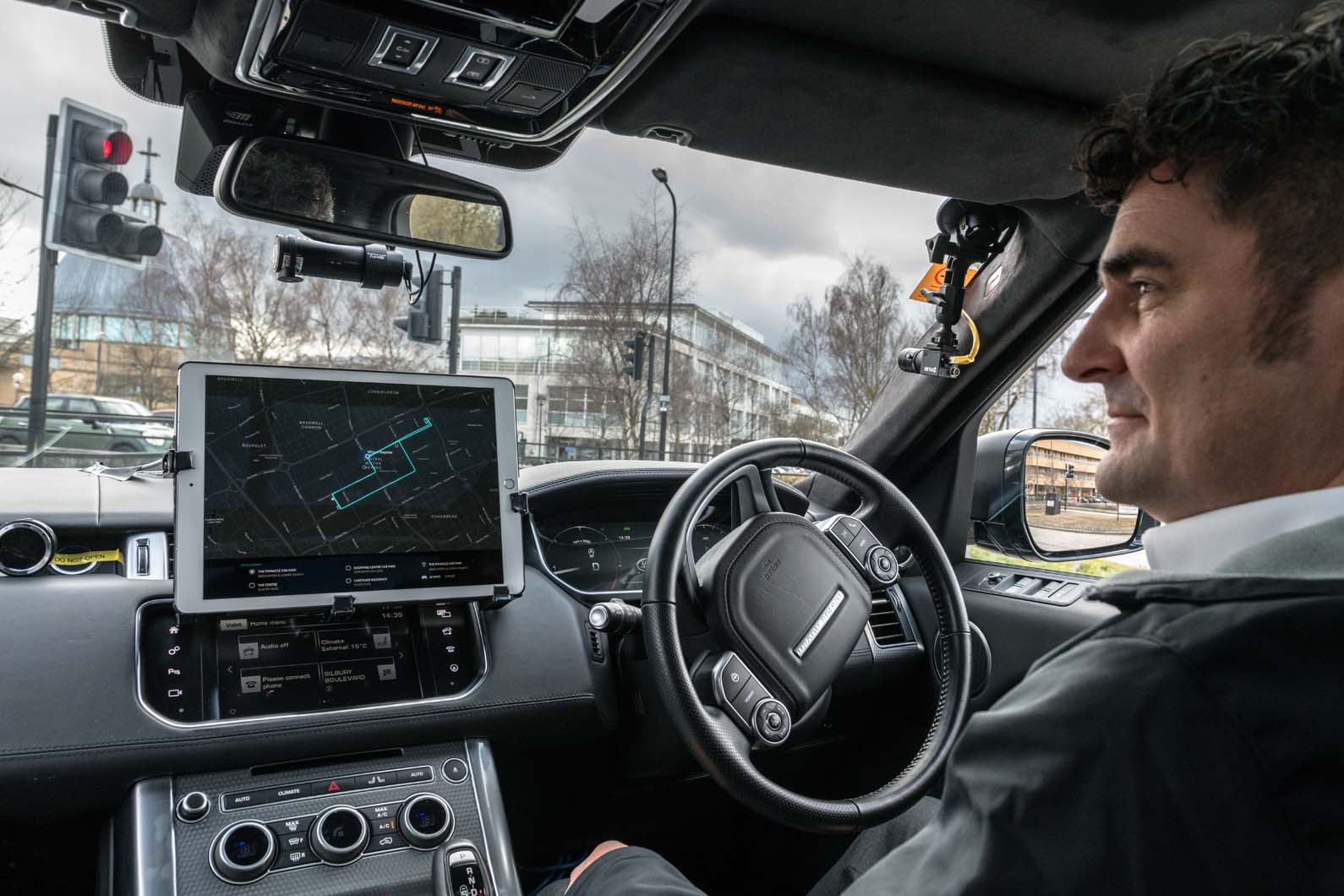The UK Autodrive project which kicked-off in 2015 to test autonomous vehicles on UK roads, has stepped up a notch with a demonstration of cars that can seek out spaces and park themselves.
The project partners include Ford, Jaguar Land Rover and Tata Motors European Technical Centre (TMETC).
The demonstration in Milton Keynes on March 22nd showcased two V2X parking-related technologies. The first called Collaborative Parking, identifies the location of available parking spaces in a car park and keeps the driver informed. When the car enters a car park it downloads a map from a roadside unit showing the availability of parking slots. As the car drives around the car park, the map is updated in real time by data from other connected cars in the same car park, showing parking spaces filling up and becoming vacant.

Project partners demonstrated the technology using a Ford Mondeo Hybrid, a Tata Hexa XTA and a Jaguar F-Pace. The cars connect by means of 5.9GHz WiFi technology dedicated for automotive use. Dennis Witt, a research engineer at Ford says: “Technically, the system is already there, it just needs production engineering and integration, but there are no plans to bring it to production yet.”
Andrew Harris, chief engineer, software, controls and driver assistance, at Tata Motors said the system is not vulnerable to hacking. “It is fully secure and uses the same encryptions as a banking system.”
The technology is already in demand, says Brian Matthews, head of transport innovation at Milton Keynes Council. “Each parking slot in Milton Keynes has a land value of between £10,000 and £15,000 and if we can help people find a convenient space quickly, we don’t have to oversupply spaces.” There are 25,000 parking spaces available in Milton Keynes but at the busiest times when the popular areas are very full, there will still be 3000-4000 spaces available throughout the town. Matthews also sees the technology reducing congestion and stress by helping people to find them. According to UK Autodrive, 30% of congested urban traffic is due to drivers looking for parking spaces.



















Join the debate
Add your comment
The bigger the car's footprint...
(and the i-Pace exceeds the 2 meter width mark!), the more likely the car will run into other road users, simply because there is less precious road space to share. Reminds me of the discussion about designated cyclist lanes and leaving them enough space when overtaking. Weird to notice JLR's intention to come up with solutions with cars that are even wider than the driver (95% the car's only occupant) is tall - which means inching forward as if the driver were lying sideways across the road.
More fake news designed to enhance JLR's standing
Enough said.
UK autonomy project in partnership with JLR...
With Ford, Tata, Milton Keynes Council and Arup also involved, why is only JLR called out in the headline? Does your bias know no bounds?